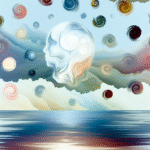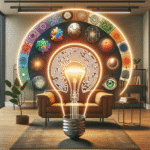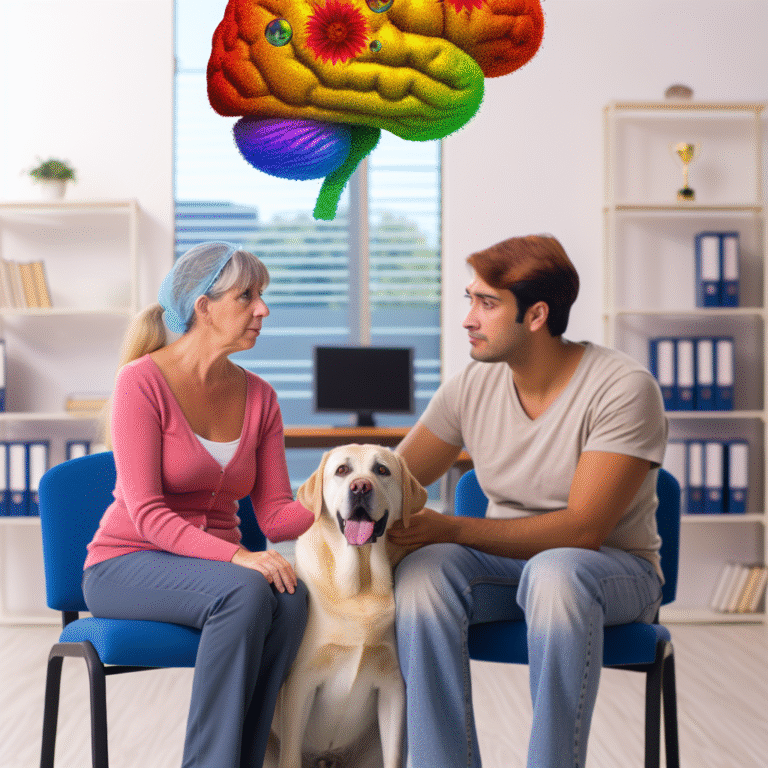
Art Therapy Explained: Techniques That Heal the Mind and Soul
Art therapy has emerged as a powerful therapeutic modality that transcends traditional mental health treatments, tapping into the transformative potential of creativity. In an era where mental health awareness is paramount, understanding art therapy is essential. This article, "Art Therapy Explained: Techniques That Heal the Mind and Soul," explores the various techniques involved in art therapy and how they contribute to emotional healing and holistic well-being.
Introduction: The Healing Power of Creativity
Have you ever lost yourself in a painting, a song, or a piece of writing? Many people have experienced moments where art allows them to express feelings that words fail to capture. But beyond personal enjoyment, art can serve as a profound tool for healing. Whether through drawing, painting, or sculpting, art therapy offers innovative means for individuals to navigate their emotional landscapes. In this comprehensive exploration of "Art Therapy Explained: Techniques That Heal the Mind and Soul," we delve into how art therapy can promote mental health, enable self-expression, and provide pathways to healing.
Understanding Art Therapy
What is Art Therapy?
Art therapy blends the creative process of making art with psychological theory and practice. It is conducted by trained professionals who understand both the artistic and psychological dimensions of the process, making it a unique therapeutic approach. Art therapy is not just about creating beautiful pieces of art; instead, it emphasizes the process of creation as a therapeutic journey, allowing clients to explore their feelings in a supportive environment.
The Origins of Art Therapy
Art therapy has its roots in the early 20th century when artists and psychologists began experimenting with the therapeutic benefits of creative expression. The works of pioneers such as Edith Kramer and Margaret Naumburg laid the groundwork for the field. Today, art therapy is recognized and practiced worldwide, supported by various methodologies that cater to diverse populations and issues.
Techniques in Art Therapy
Recognizing the various techniques in art therapy is essential for understanding how this therapeutic approach can heal the mind and soul. Here are some techniques commonly employed by art therapists:
1. Free Expression
One of the most liberating techniques in art therapy is free expression, where individuals create without preconceived notions or judgments. This spontaneous art-making promotes emotional release, enabling individuals to confront feelings that may be difficult to articulate.
Case Study: Free Expression in Action
A 30-year-old woman suffering from anxiety and depression participated in a series of free expression art sessions. Each week, she was encouraged to use colors and forms that resonated with her emotions. Over time, she found clarity and relief from her anxiety, allowing her to address other therapeutic goals with her therapist.
2. Guided Imagery and Art
Guided imagery combined with art therapy involves clients envisioning a serene setting or experience, which they then translate into visual art. This technique fosters relaxation and helps individuals visualize their goals or coping strategies.
Case Study: The Serenity Project
A group of soldiers returning from deployment participated in guided imagery art therapy. By visualizing and creating art that represented their experiences, they were able to process trauma and reconnect with their sense of self-worth, promoting emotional healing.
3. Collage Making
Collage making allows individuals to explore their identities and experiences through the combination of various visual elements. This technique can be particularly beneficial for clients who struggle to express themselves verbally, providing a visual narrative of their thoughts and feelings.
Case Study: Identity Through Collage
In one therapy group, adolescents created collages that represented their perceptions of self-image. The discussions around these collages facilitated crucial conversations about identity, body image, and acceptance, ultimately leading to stronger self-esteem.
4. Mandala Creation
Drawing mandalas—a circular, intricate design—offers a structured yet creative outlet for expression. The repetitive process of creating mandalas is meditative, promoting mindfulness, focus, and emotional regulation.
Case Study: Mandalas for Mindfulness
Cancer patients participating in a mandala-making workshop reported increased feelings of serenity and was better able to cope with their diagnosis and treatment. The act of creation provided much-needed respite and connection to their emotions.
5. Movement and Dance
Incorporating movement into art therapy can be especially beneficial for those who find it challenging to engage with traditional art materials. Dance and movement allow for physical expression and can help release pent-up emotions.
Case Study: Dance Therapy for Trauma Survivors
A group of trauma survivors engaged in dance therapy designed to allow movement to express unspoken feelings. Participants reported heightened self-awareness and catharsis, which significantly assisted their healing process.
The Benefits of Art Therapy
Emotional Release
One of the greatest advantages of art therapy is its capacity for facilitating emotional release. Individuals often find themselves confronting feelings that have been suppressed or ignored, leading to greater self-awareness and understanding.
Enhanced Self-Esteem
Engaging in creative activities helps boost self-esteem and self-worth. Art therapy empowers individuals to take pride in their work, leading to improved confidence and resilience.
Improved Communication
Art therapy serves as an alternative communication channel, allowing individuals to express themselves beyond words. This aspect is particularly vital for children or those with communication barriers.
A Closer Look: Art Therapy Techniques Table
| Technique | Description | Benefits |
|---|---|---|
| Free Expression | Spontaneous art-making without constraints | Emotional release and clarity |
| Guided Imagery and Art | Visualization followed by creation of art | Relaxation and goal visualization |
| Collage Making | Combining visual elements to narrate experiences | Identity exploration and discussion |
| Mandala Creation | Structured design promotes mindfulness | Focus, emotional regulation |
| Movement and Dance | Physical expression through creative movement | Catharsis and self-awareness |
Common Misconceptions About Art Therapy
While art therapy has gained recognition, there are still misconceptions that linger.
1. "You need to be an artist to benefit from art therapy."
This is one of the most prevalent myths. Art therapy is about the process, not the finished product. Individuals of all skill levels can benefit.
2. "Art therapy is only for children."
Art therapy is beneficial for people of all ages. Adults facing issues such as anxiety, depression, or trauma can find immense value in creative expression.
3. "Art therapy is just a hobby."
While engaging in art can be a recreational activity, art therapy has an intentional therapeutic framework aimed at fostering personal growth and healing.
Conclusion: Embracing the Healing Journey
As we conclude this exploration of "Art Therapy Explained: Techniques That Heal the Mind and Soul," it is essential to recognize the profound impact that artistic expression can have on emotional well-being. Art therapy serves as a beacon of hope, allowing individuals to unpack complex emotions and engage with their inner selves in healing ways.
The journey through art therapy is not a linear one; it can be one filled with challenges and breakthroughs. However, by embracing the process of creation, individuals embark on a path toward self-discovery, healing, and ultimately, empowerment.
Whether you are considering art therapy for yourself or looking to support someone else, remember that creativity holds the power to heal.
FAQs
1. Who can benefit from art therapy?
Art therapy is suitable for individuals of all ages and backgrounds, including children, teens, and adults. It is effective for those experiencing emotional difficulties, trauma, or seeking personal growth.
2. Do I need to have artistic skills to participate in art therapy?
No artistic skill is required. Art therapy focuses on the expressive process rather than the artistic quality of the work created.
3. How can I find a certified art therapist?
You can find a certified art therapist through organizations such as the American Art Therapy Association. Checking qualifications and whether they are licensed is crucial.
4. How long does art therapy typically last?
The duration of art therapy can vary widely depending on individual needs and goals. Sessions typically run for about 50 minutes and can be conducted weekly or bi-weekly.
5. What types of media might I use in art therapy?
Art therapists might use various media, including paint, charcoal, clay, collage materials, and mixed media. The choices will depend on personal preference and therapeutic goals.
In summary, art therapy is a rich and diverse field that offers invaluable techniques for healing the mind and soul. By engaging in creative expression, individuals can explore their emotions, build resilience, and discover new pathways to personal growth. Embrace art therapy, and consider it a powerful tool in your healing journey.













